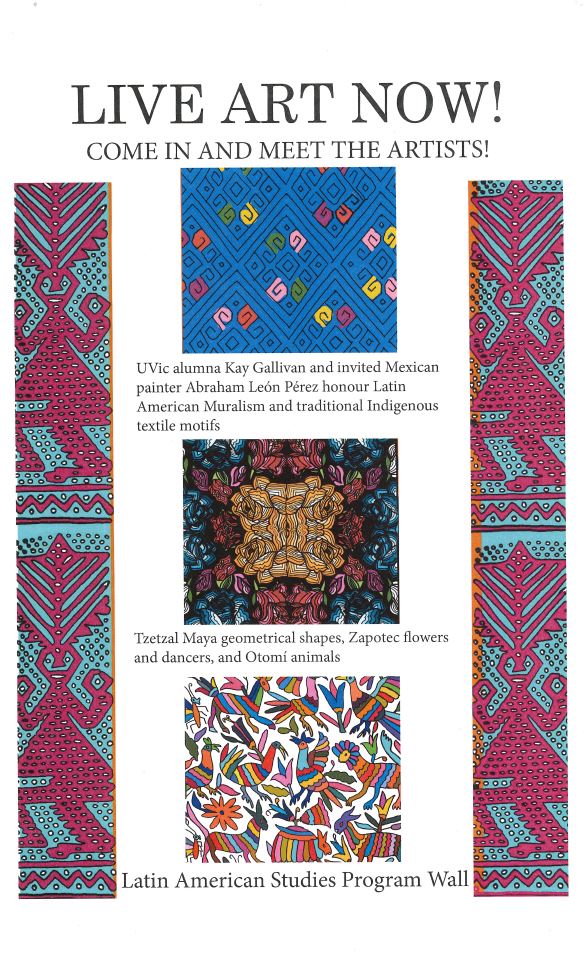The Latin American Studies Wall

The artwork currently being painted on the ground floor of the A Wing of Clearihue celebrates the renewed support and awareness for the Latin American Studies Program at the University of Victoria. Artists Kay Gallivan, an alumna and muralist, and invited Mexican painter and curator Abraham León Pérez, honour Latin American muralism through their rendition of a selection of traditional Indigenous Mexican motifs. Latin American muralism, and particularly Mexican muralism, is well-known for depicting the struggles of nation-building, highlighting politicians and armed struggle. Gallivan and León Pérez, however, elected to depict the handwork of women who have for centuries offered a symbolic understanding of the intersection between community, nature, and the sacred in their embroidered and waist-loomed textiles. The ethnicities represented in the Clearihue installation are the Bats’il Winik from the highlands of Chiapas, commonly known as the Tzotzil Maya, the Hñähñu or Otomí from the Central Mexican Plateau and the Ben 'Zaa or Zapotec and Ñuu Dzahui or Mixtec from Oaxaca.
From left to right, the first large panel is based on a Bats’il Winik waist-loomed textile from Bayalemo, Chiapas, produced by Manuela Hernández Díaz. Its geometrical shapes represent the cycles of life through stylized flowers.
The central panel depicts the flowers that Ben 'Zaa women from the Isthmus of Tehuantepec, Oaxaca embroider on their blouses. These flowers are adaptations of those found on the mantones or Chinese silk shawls that the Manila galleons brought to Latin America and highlight the connections between the region and Asia.
The third large panel is inspired by a Hñähñu embroidery from the state of Hidalgo. The shapes of the animals and flowers are believed to derive from rock paintings and have been understood as a kind of codex.
The two small Ñuu Dzahui panels depict a backstrap woven textile from Santo Tomás Jalieza, Oaxaca, decorated with dancers wearing elaborate feather headdresses used in the Danza de la pluma or “Dance of the Feather.” Traditional male waistbands were decorated with these dancers. Today they decorate table runners and other household textiles. Dating from the early colonial period, this dance, used as an evangelizing tool by Dominican friars, reenacts the Conquest, seeing it as the point of departure for a fusion of Spanish and Indigenous cultures. The Danza de la pluma is now performed yearly as the closing number of the Guelaguetza dance festival of Oaxaca.
Beatriz de Alba-Koch
Director, Latin American Studies Program
